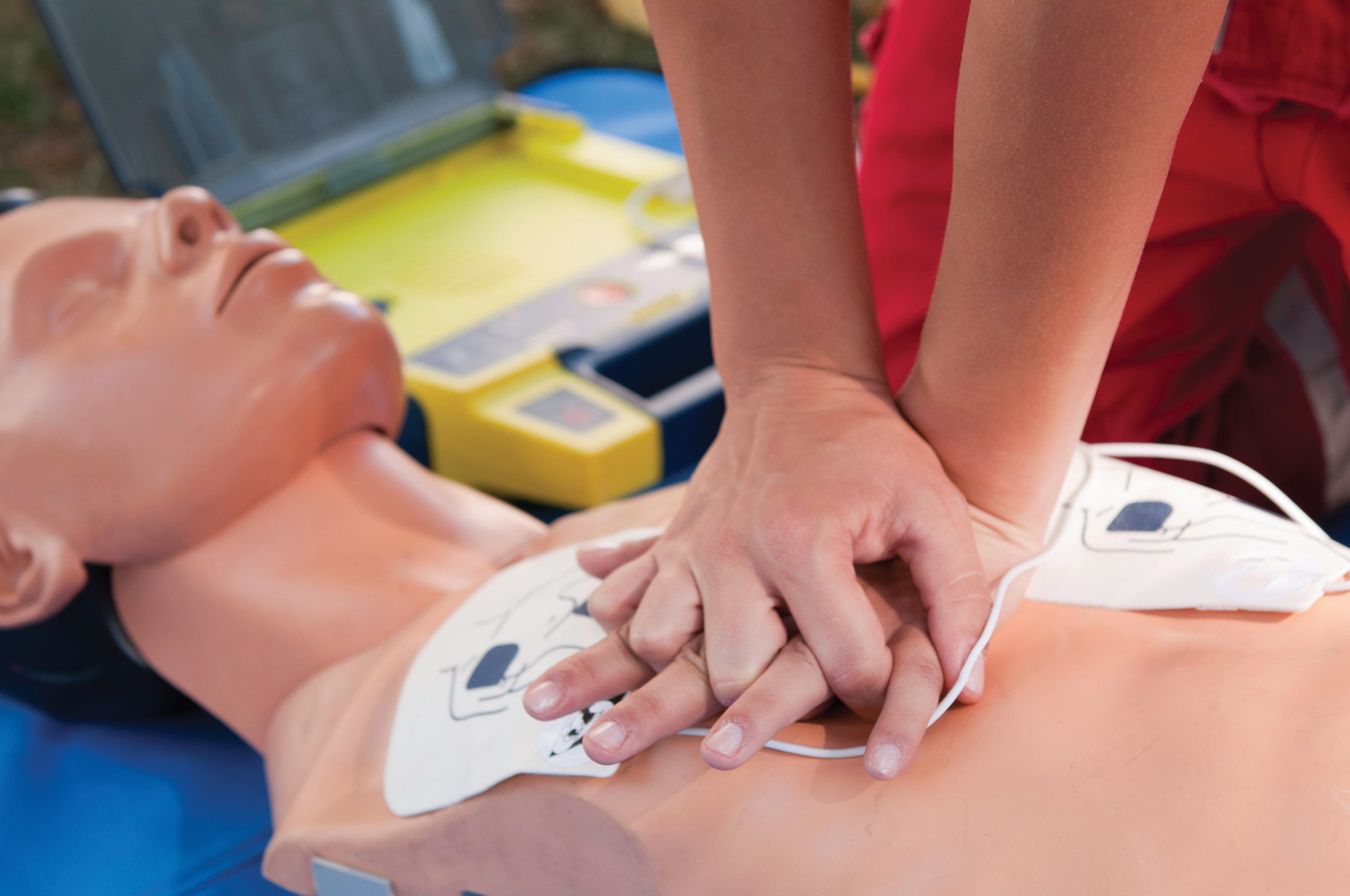
Heart disease is the leading cause of death in the United States and in Kentucky. According to the American Heart Association, about 10,000 of the state’s 4.4 million residents die of heart disease annually, the eighth highest rate nationwide.
But these poor statistics are reversible. In fact, individuals are making choices every day to lessen their risk factors, and the state’s top cardiovascular experts are here to help with their best advice for prevention, what to do in a potential emergency and if there is one, what treatment options are saving lives and preserving quality of life more than ever.
Healthy tips
Focusing on a heart-healthy lifestyle should be foundational in a person’s wellness journey, said Dr. Steve Lin, a cardiologist with CHI St. Joseph Health.
There are many ways to do this, he said, including knowing and heeding the American Heart Association’s “Life’s Essential Eight” checklist for lifelong health. That list includes actions toward keeping blood pressure, blood glucose and cholesterol levels in optimal ranges, along with healthy diet, exercise, stress management and other lifestyle choices like avoiding or stopping smoking and getting enough quality sleep.
Regular checkups with primary caregivers and/or cardiovascular specialists are also important so that you know where your health metrics stand. Making it a priority to keep those numbers in check can reap many rewards, including the likelihood of fewer medical tests, procedures and pills to take now and in the future.
Lin said regular exercise — at least 150 minutes of moderate activity or 75 minutes of vigorous exercise weekly — is recommended to avoid the health pitfalls accompanying a sedentary lifestyle, like obesity and diabetes.
“Regular exercise is one of the most effective therapies,” Lin said. “It has numerous benefits,” including elevating mood and boosting metabolism.
He recommends starting where your abilities allow and gradually building on progress toward these recommended levels. Look for ways to get small bursts of exercise into each day, like taking the stairs versus the elevator or parking farther away from destinations.
Even if you have a strong family history of heart disease, it’s not inevitable that you will have heart disease as well, said Dr. Raymon Nelson, a cardiologist at Pikeville Medical Center. One simply must be more proactive and take risks seriously.
“You’re going to need to be more aggressive in your protection methods,” Nelson said. “One of the things that is important is knowing your cholesterol level. At an early age we should know what our cholesterol level is.”
Nelson recommends keeping close track of cholesterol levels with yearly bloodwork and then managing with medications if needed.
Some heart disease risk factors can be changed, he adds, such as diet, customs and lack of exercise.
“It’s not a death sentence,” Nelson said. “Just because your father had a heart attack doesn’t mean you are going to have a heart attack. You can alter it by altering environmental factors, and you can alter it with medications that your father didn’t have.”
There now are medications that are injected twice yearly that are proven effective in lowering cholesterol.

What to do in an emergency
Heart illness and life-threatening crises do happen, but there are effective actions to take in a potential cardiac emergency, said Dr. Vincent L. Sorrell, acting chief for the division of cardiovascular medicine and acting director of the Gill Heart & Vascular Institute at UK HealthCare.
Sorrell notes that women often have different heart attack symptoms than men and this often creates delays in seeking care, which worsens the odds for recovery or survival.
“Cardiovascular disease is the No. 1 killer of women, taking one in three women’s lives annually,” he said.
More people should take the time to learn CPR so that they can help others experiencing a cardiac arrest emergency, and know how to use a defibrillator, which today is often available in public places.
Sorrell said that of those who experience cardiac arrest in a community setting, 60% do not get CPR. For those who do and are correctly administered defibrillation within a minute, the survival rate is around 90%.
Sorrell said people wait an average of three hours to seek help after symptoms arise. Those symptoms may include tightness or fullness in the center of the chest, or discomfort affecting the shoulder, neck, jaw, teeth, back, stomach or arm lasting 15 minutes or more.
“We know ‘time is muscle,’” he said. “Because when you’re having a heart attack, muscles die.”
He advises people who notice symptoms to call 911 as soon as possible.
Those without an aspirin allergy or potential side effect from it may benefit from taking an aspirin right away. If the person has had a past blockage and is prescribed nitroglycerin, that can also help buy time until emergency care is available, he said.
Loved ones of someone experiencing potential symptoms of a cardiac event should insist the person seek emergency care. In the meantime, encourage them to relax and loosen any tight clothing while monitoring for lightheadedness, change in mental status or loss of consciousness.
Dr. Lin said not everyone experiencing a heart attack has obvious signs like chest tightness—30% of men and 50% of women don’t. Fatigue and shortness of breath can be warning signs, too, among others.
His best advice is “that they seek attention quickly.”
If a stent is placed in a blocked vessel within an hour of onset of a heart attack, full recovery is likely, Lin said. If six hours elapse, chances are moderate, and after 12 hours, full recovery is highly unlikely.

Treatment and recovery
At UofL Health, interventional cardiologist Dr. Chandhiran Rangaswamy holds an optimistic view of modern heart disease treatments.
“Just about every (cardiac illness) is treatable. How much recovery there will be is what’s in question,” he said.
A heart attack—which is loss of adequate blood flow to the heart muscle—can be treated with angioplasty or bypass surgery, depending on the severity of blockage, and congestive heart failure is often treatable with medication, also depending on severity. Arrhythmias can be treated with medication or an ablation procedure, depending on type.
Recent innovations such as drug-eluting stents (DES) placed during angioplasty deliver medication directly to the arterial wall to prevent growth of scar tissue and reduce the risk of narrowing of the stented area after treatment, Rangaswamy said. Robot-assisted surgeries are helpful, too.
In addition, cardiac rehabilitation can recondition the heart after a heart attack, diagnosis of heart disease-related conditions or certain arrhythmias. Rangaswamy said such programs are helping patients live longer with diet and exercise programs and smoking cessation.
Innovations in cardiovascular care are helping patients combat heart disease, Lin said.
“This field has the largest number of innovations—from device therapy to medical care—in all subspecialties of cardiovascular medicine,” he said.
These include a type of balloon angioplasty used in Europe and available soon in the U.S. that contains chemotherapy to prevent arterial renarrowing. Drug-coated stents can also contain chemotherapy to prevent renarrowing and help patients remain symptom free after placement, Lin said.
New, safer placement sites for pacemaker leads are showing promise as well. Remote monitoring devices can be implanted for patients with unexplained fainting or strokes to better pinpoint a cause.
Drugs unavailable five to 10 years ago for heart failure are working well today, Lin adds.
While stress isn’t a clearly quantified contributor of heart disease, it is known that the stress hormone cortisol can lead to insulin resistance, inflammation, poor dietary choices and sedentary tendencies, so it’s important to actively manage stress not only for emotional health but cardiovascular wellness.

And it’s not all based on medication and technological intervention.
Lin sees common threads in patients doing well at age 90 and older. Most are women with a normal body build and they have an air of gratitude, purpose in life, are active, have strong personal connections with friends and family and enjoy their lives.
Striving for that mindset and lifestyle may well be the secret to longevity.
“I think that aspect of their health is a very important part of overall cardiovascular health,” Lin said.



















